Robert Williams is an artist of extreme uniqueness. He paints art in such a way that inspires and repels at the same time. He reminds me of those “Hot Rod / Monster” models that I used to make in the 1960’s. You know the type, a big ugly hairy monster with big eyeballs is sitting in this deliciously tiny hot rod trying to drive it around. He’s a talent, for certain, but his work is not for everyone.
I want to explain a bit about what lowbrow art is. The lowbrow or pop surrealism movement began in California among the surfer and hot rod culture and was aimed squarely at that culture; it’s therefore considered a populist art movement, unlike movements such as abstract expressionism and the like, which are often regarded (correctly or incorrectly) as elitist. The art is characterized by the juxtaposition of “fine art” concepts or styles with kitsch, comics—especially underground comix—cartoons and other pop cultural ephemera, often in bizarre or humorous ways. More recently, Japanese culture and anime-style art have made their way into the movement. The founding father of lowbrow is usually considered to be Robert Williams, who facetiously adopted the title The Lowbrow Art of Robert Williams for his first book of collected art, in response to the fact that at the time no major galleries or museums would display his art, considering it trashy and tasteless. The name stuck and became associated with the movement as a whole, even though Williams himself has since rejected it in application to his own work. (If Williams is the movement’s father, then its godfather is surely Ed “Big Daddy” Roth, famous for his Kustom Kulture art and especially for the character Rat Fink.) -Pigtails in paint
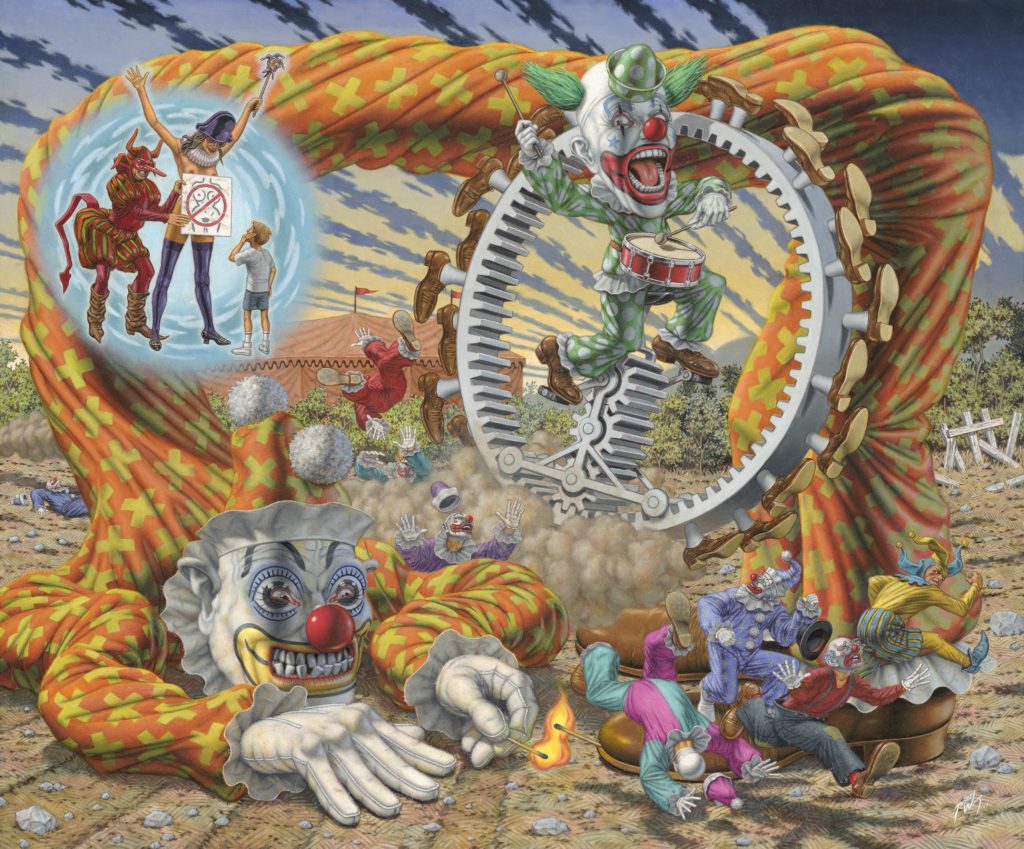
His paintings are a wild pop-culture pastiche of hot rods, pinup girls, and cartoon sex and violence. For the better part of the last 50 years, Robert Williams has waged war on the mainstream art world with those eye-popping paintings, a best-selling art magazine and a growing flock of like-minded rebel artists. In a Robert Williams painting, there might be blood, fiery hot rod crashes or lecherous robots. There have also been surly tooth fairies in torn fishnets that bear a passing resemblance to Symbionese Liberation Army-era Patty Hearst.
- What is the Lowbrow Art Movement?
- Lowbrow (art movement) – Wikipedia
- Appetite For Destruction – Robert Williams
- Lowbrow and Kustom Kulture Art by David Lozeau
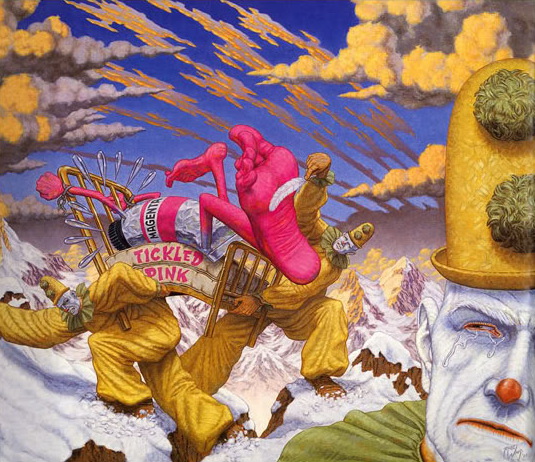
Oh, and don’t forget that sexy and very funny series that depicts half-naked women reclining seductively on giant platters of tacos and enchiladas.
- ROBERT WILLIAMS – Nevermind Gallery
- What the Heck is Lowbrow Art?
- Robert Williams (artist) – Wikipedia
- Robert Williams – 24 artworks – WikiArt.org
The term “Lowbrow” was coined by Juxtapoz magazine founder Robert Williams in the late 1970s as a way to describe a modern art movement that flew in the face of traditional, gallery-safe, “highbrow” elements and imagery. In this eclectic style, which draws inspiration from punk, metal, and rockabilly music, as well as the tattoo, hot rod, tiki, and monster movie subcultures, all rules are thrown out the window. Williams later referred to the Lowbrow movement as "cartoon-tainted abstract surrealism,” but it has also been called “pop surrealism” and “underground art,” among other things. It often depicts the vehicles and fashions derivative of the pin-up girls of the 1940s, the greasers and cartoons of the 1950s, the Ed “Big Daddy” Roth custom car builders of the 1960s, the music and lowriders of the 1970s, and the London and SoCal street art of the 1980s. The kustom kulture lowbrow scene emerged from—and remains most prominent in—Los Angeles, where, on any given weekend, you can find an event featuring amazing cars, top tattoo artists, great food, and lively music. You’ll find Lozeau there, somewhere between the surf, skeleton, hot rod, Poly-Pop, and zombie art, working on a new painting in his signature illustrative style. -David Lozeau

But in the pages of the ’60s counterculture underground comics, Williams flourished alongside like-minded artists who pushed the boundaries of free expression. He was a founding member of a San Francisco-based comic artist collective that also included Robert Crumb, Gilbert Shelton and the late Spain Rodriguez.
All the while, Williams toiled away on his paintings.
- The Lowbrow Art of Robert Williams: Robert Willams
- Robert Williams Official Site
- The Sarcastic and Subversive Low Brow Art of Robert Williams
- Lowbrow (art movement) – Wikipedia

Problem was, there was little space for the kind of hot-wired, pop culture-drenched representational paintings he was creating in an art world dominated by abstract expressionism.
- The Little Lowbrow Girl: Arwassa
- From Pop Surrealism to Lowbrow – Something Got Lost
- Robert Williams: The Father of Exponential Imagination
- Lowbrow Art of Robert Williams by Robert L. Williams II
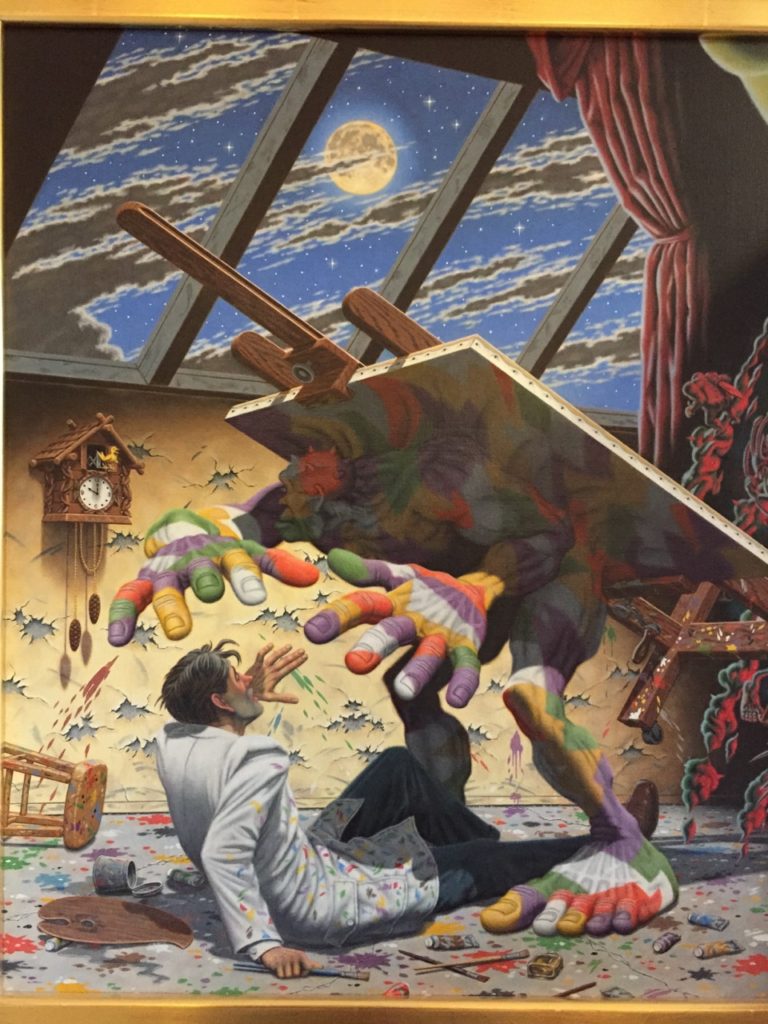
Williams found an outlet and acceptance in after-hours galleries at punk rock clubs in L.A. and New York. His art work started appearing on record sleeves and concert posters for bands that have mostly vanished. But mainstream success remained elusive.
- Ode To Sentimentality Poster Robert Williams Lowbrow Art
- robert williams art products for sale | eBay
- The Lowbrow Movement: Art History 101 Basics – ThoughtCo
- The lowbrow art of Robert Williams. – Franklin
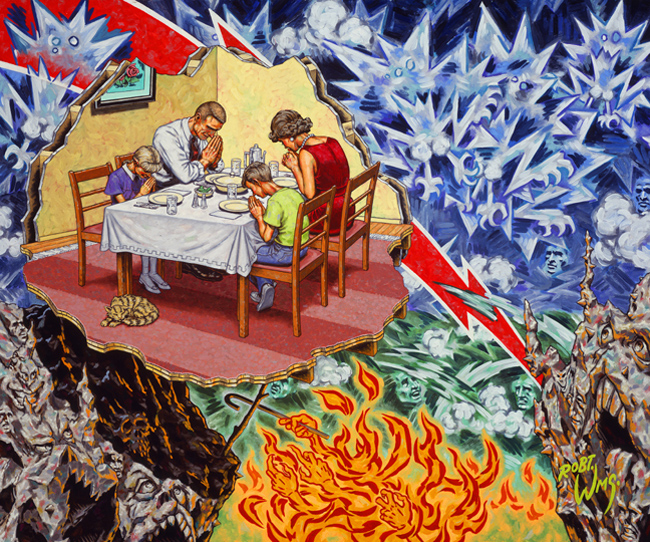
Until 1987, that is. That’s when yet another then-unknown band came knocking on his door after spotting what is today considered Williams’ most notorious painting.
A scruffy L.A. glam rock band called Guns N’ Roses wanted it for the cover of its debut album. They also wanted to name the record after the painting: “Appetite for Destruction.”
- Offbeat L.A.: Artist Robert Williams: SLANG Aesthetics
- Juxtapoz Founder Robert Williams on Trump, Lowbrow Art
- About — Robert Williams Official Site
- Highbrow, Lowbrow: Who Cares?
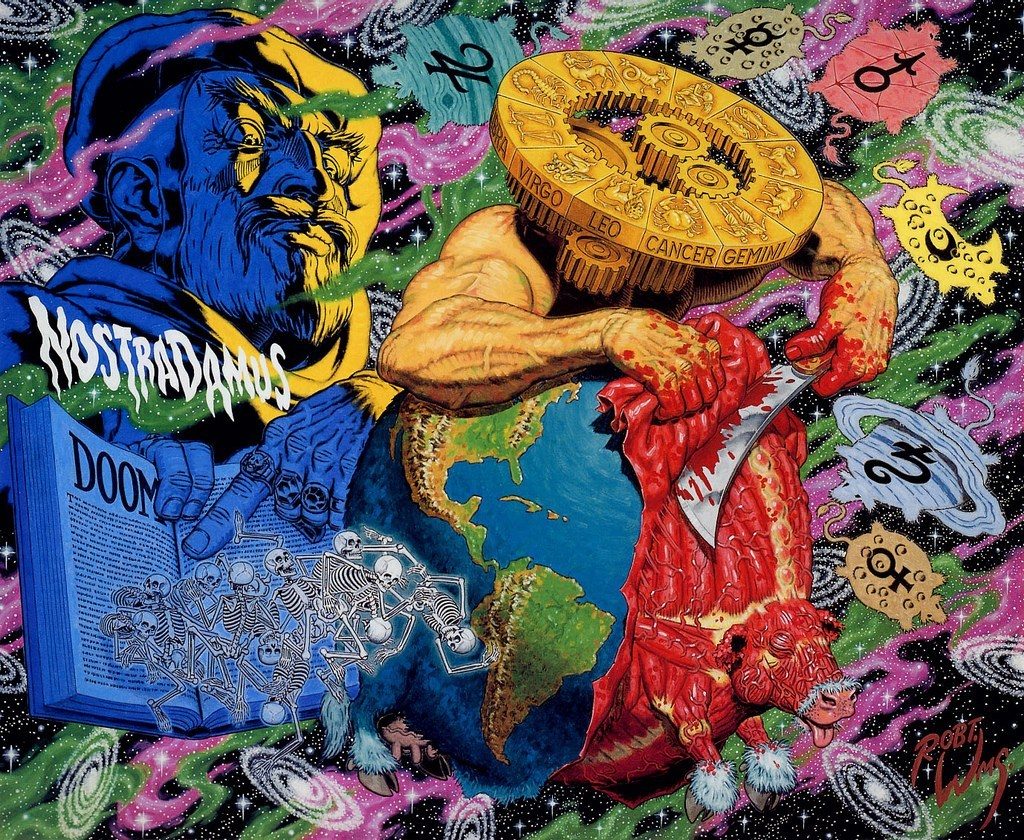
In the painting, which Williams created in the late 1970s, a pretty young woman in a short skirt is selling toy robots on the street. Her kiosk is knocked over. So is she. A menacing robot in a trench coat stands over her.

Williams told the band fine, use it. But he warned them the cover would probably land them in trouble with religious and feminist groups. It did. One organization famously referred to it as a “glorification of rape.”
The band rallied to his defense, singer Axl Rose telling MTV that he thought people were overlooking Williams’ artistic genius.
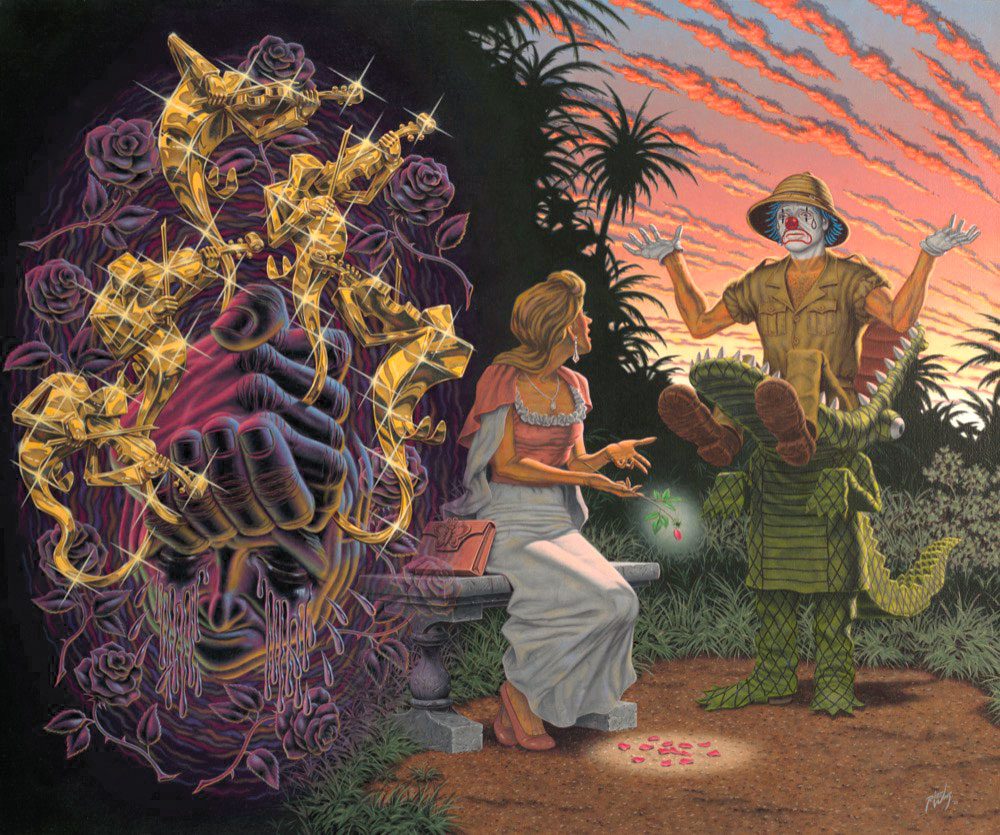
“I think since it was such an outrageous picture that the skill gets overlooked,” said Rose, standing alongside Williams in an interview shortly after the album’s release. “A lot more people, I think, are turned on to Robert’s artwork (because of the album) than were before, and I’m really glad to be a part of that.”
But the band ultimately caved and yanked the artwork.

The painting caused a stir again in 2012 when a reformed Guns N’ Roses used the image in a concert poster and companion DVD. Subsequent copies of the DVD still employ the Williams painting, but in denuded form. The girl is removed, the painting devoid of its original power.
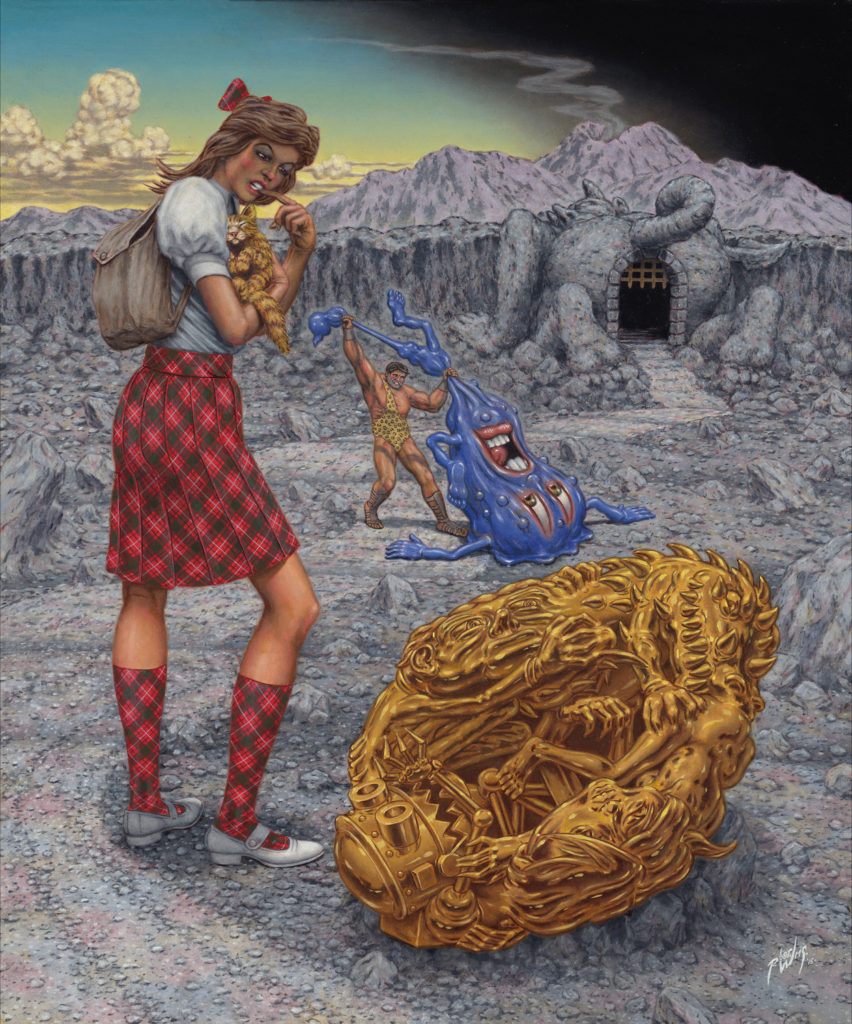
The 1987 notoriety cemented Williams’ reputation as a major outsider artist with an outsized influence on a new generation of artists — many of whom are now regularly featured in the magazine he co-founded 20 years ago, Juxtapoz.
Presented for your enjoyment and horror.
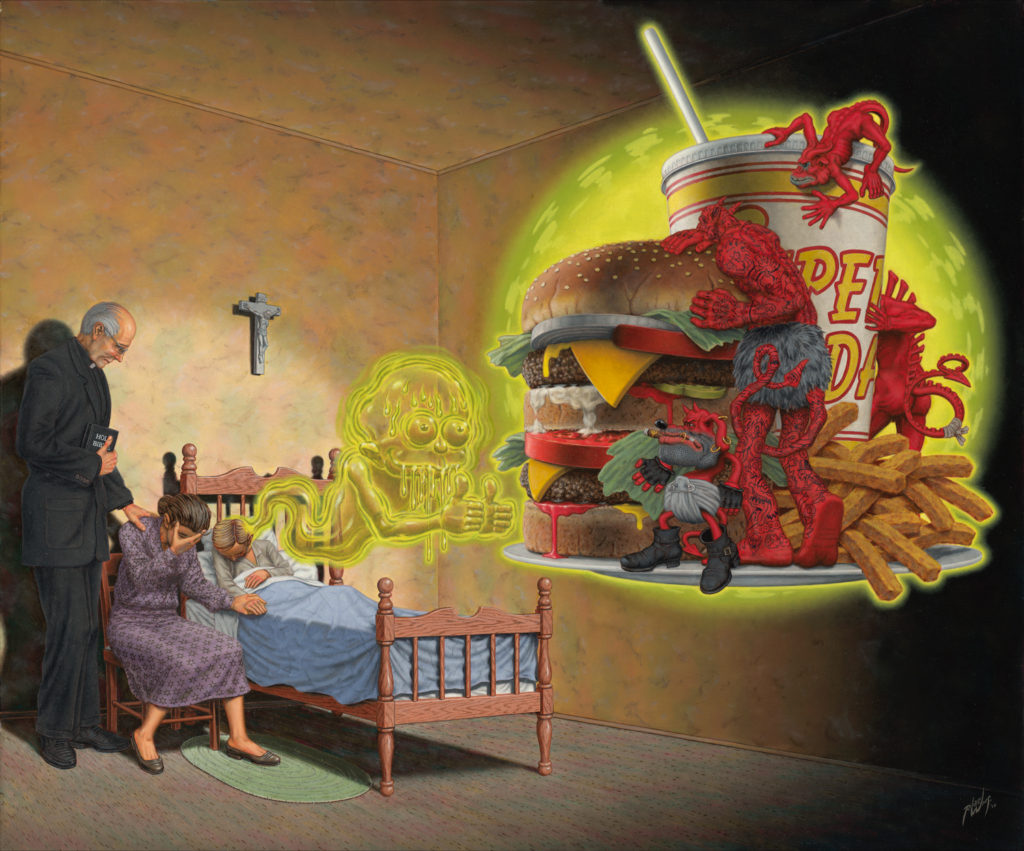
Movies that Inspired Me
Here are some movies that I consider noteworthy and worth a view. Enjoy.




Stories that Inspired Me
Here are reprints in full text of stories that inspired me, but that are nearly impossible to find in China. I place them here as sort of a personal library that I can use for inspiration. The reader is welcome to come and enjoy a read or two as well.









































My Poetry

Art that Moves Me

Articles & Links
You’ll not find any big banners or popups here talking about cookies and privacy notices. There are no ads on this site (aside from the hosting ads – a necessary evil). Functionally and fundamentally, I just don’t make money off of this blog. It is NOT monetized. Finally, I don’t track you because I just don’t care to.
- You can start reading the articles by going HERE.
- You can visit the Index Page HERE to explore by article subject.
- You can also ask the author some questions. You can go HERE to find out how to go about this.
- You can find out more about the author HERE.
- If you have concerns or complaints, you can go HERE.
- If you want to make a donation, you can go HERE.

